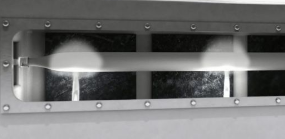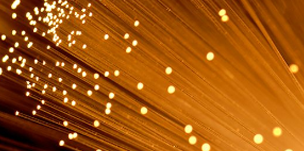In this era of digitization, data has the power to change the world. While data continues to fuel innovation and technological advancement, the world has started to witness unprecedented growth in internet connectivity. Consequently, there is an increasing demand of digital infrastructure to deliver ubiquitous optical connectivity. Read More..
The existing network infrastructure is not fully equipped to deal with the sudden rise in data traffic. Across the globe, the optical fibre penetration levels are still low. Even in the developed nations, fiberization is only 65-70% and wired broadband penetration is not enough.
In order to ensure that the people receive the benefits of a digital economy, it’s important to connect them with high-speed internet. This can only be achieved by building robust optical fibre network across the globe. To leverage new technologies, such as 5G and FTTH, telecom operators across the world need better performing networks, which are faster and more affordable.
A network’s low quality of service (QoS) can cause a lot of issues while designing and building the network infrastructure. In most cases, this happens due to high signal losses and challenges faced while upgrading the network. The process to roll out new networks can be time-consuming, and requires skilled manpower to manage the difficult installation processes.
Considering these challenges, STL Opticonn, the Optical Connectivity Solution has been designed to enable telecom operators, ISPs, citizen networks and large enterprises to roll out networks faster, more effectively, and cost efficiently. The solution offers end-to-end capability ranging from to optical fibre products, pre-connectorized kits and post-sales support.
The STL Opticonn, the Optical Connectivity Solution, has been created to help telecom operators, ISPs, citizen networks, and major corporations build out networks more quickly, more effectively, and more affordably. We are offering end-to-end functionality, including optical fiber components, pre-connectorized kits, and post-sales support.
We offer the best optical fiber solution in the entire world. We use the first backward-compatible G.657.A2 fiber in our optical fiber line. Our OFS can transmit data signals far more quickly than traditional fiber lines. Our glass preforms are created using extremely high-purity chemicals, resulting in the highest possible fiber optics. For businesses, homes, and data centers, we employ specialized optical fiber lines. Scaling up fiber deployment is made simpler by STL’s selection of optical connection devices, which are tailored to the unique demands of networks and service providers. Faster and more reliable communication is made possible by STL’s high-quality optical interconnect devices, which are used in the exchange, OSP, distribution & access, and customer premises product categories. Additionally, fiber-optic cables are unaffected by electromagnetic interference (EMI), which can slow down transmission since it is a result of the weather. The optical connection solutions from STL will always be profitable for you and your business.Read Less..
Optical Products
Prepared Sub-Systems
Smart Logistics
Partner Services
Fibre- roll out projects, especially in India has been slow paced. The fall-outs are evident in the time and cost overruns that plague large scale projects. Industry needs a robust solution that leverages Mechanisation, tool based project tracking and strategic partners to deliver stage wise excellence
STL promises to bring this stage wise excellence in the fibre rollout and deployment by our LEAD 360o solution. It is a first of its kind of orchestration approach for Hyperscale-Fibre deployment through innovation and best of our integration practises. The solution has the capability to deliver scale and coverage for core networks, mobile, home and rural.
STL has vast experience in network design and rollout especially in latest deployment technologies such as video surveys, geo-monitoring, sensors and analytics. Through our LEAD 360 o deployment approach we are creating a smarter digital network in rural areas as well by providing various smart applications including e-education, e-health and e-governance. We will continue to leverage our latest fibre deployment technologies to improve everyday living experiences of the citizens. Read Less..
Reduction in Duct Size
Faster Blowing
Faster Installation
Improved Signal Strength and Extended Network Lifetime




1. Chemical Vapour Deposition
Exceptionally controlled deposition of microscopic glass particles to create soot preform. Through the chemical interaction of gas-phase precursors, thin films are created on a heated substrate using the widely used materials processing technique known as chemical vapor deposition (CVD). A technique using vapor deposition to create high-performance optical fibers and light guides. In MCVD, certain chemicals are exposed to fire before being fused and deposited one layer at a time onto a glass tube or substrate (usually germanium or phosphorous silicate).
2. High Precision Sintering
A thermal process called sintering uses heat and/or pressure to compact loose, tiny particles into a solid, cohesive mass without melting them completely. Sintering is done to give the material strength and integrity. Porous optical fiber preforms should be dried and sintered using the STL process, especially if they have a glass core cane that is encased in soot. The porous preform is heated to a presenter temperature slightly below the point at which it would start to quickly densify after being dried in a drying environment.
3. Ultra-Pure Glass Preform
We are one of the world’s top producers of single-mode glass preforms. We are distinctive in that we begin with silicone metal and finish with premium “Glass Preforms.” The highest-grade optical fiber is produced by the glass preforms, which are made of extremely high-purity (5N) chemicals. The optical fibers that might possibly transfer data at high speeds are made using these preforms.
4. Optical Fiber Drawing
An optical fiber is a thin, transparent fiber used to transport light that is often constructed of glass or plastic. The image depicts the design of a single optical fiber. An optical fiber’s main structural components are an inner core, through which light pulses flow, and an outer protective coating. Using state-of-the-art equipment and the technological know-how of STL, we make optical fibers of the highest quality and variety.
The science of sending data, sound, and pictures through tiny, translucent fibers is known as fiber optics, also known as fiber optics. Fiber optic technology is used to connect computers in local area networks and has essentially replaced copper wire in long-distance telephone lines in the telecommunications industry. The fiberscopes used for endoscopy, which is the examination of internal organs, and for visual inspection of the interiors of structures, are also based on fiber optics. A hair-thin fiber, occasionally composed of plastic but most frequently of glass, is the primary component of fiber optics. STL manufactures optical fiber using glass.
A fiber-optic cable is made up of a few hundred to thousands of optical fibers enclosed in a plastic sheath. They transmit data signals in the form of light and travel hundreds of miles more quickly than those used in conventional electrical cables. Optic cables and optical fiber cables are other names for them. The Internet, computer networking, phone lines, and cable television all employ optical fibers. Additionally, they are widely utilized in the medical field for endoscopy, in the automobile sector for illumination both inside and outside the car, and in the military for fast data transmission.
An assembly is comparable to an electrical cable that additionally contains one or more optical fibers that are used to convey light. This is referred to as a fiber-optic cable, also known as an optical-fiber cable. Fiber optics is a technology that allows for the long-distance transmission of information as light pulses through glass or plastic fibers. In an optical fiber cable, light moves along the wire by frequently bouncing off its walls. Each photon of light bounces down the pipe again, reflecting off an internal mirror. The light beam moves through the cable's core.
Yes, WiFi at 2.4 and 5 GHz is compatible with optical fiber. While fiber optic communication utilizes light to transport data through fiber optic connections, 5G employs radio waves to convey and receive data. While 5G can reach downlink speeds of up to 20 GB/s and uplink speeds of up to 10 GB/s, the realistic speed measured on fiber optic connections is 100 GB/s.
a. Reliability: 5G is more reliable. Glass cables are used by fiber to transport data. A whole network may be offline if a fiber line is destroyed until repairs are made. On the other hand, 5G connects to several cell towers simultaneously to attain amazing endurance. Any issues with specific towers are easily overcome with 5G.
b. Security: Over fiber, 5G has significant security advantages. The foundation of 5G networks is end-to-end encryption (device to device). As a result, fiber internet is wired and does not rely on radio waves the way wireless networks do. As a result, it is unencrypted on its own.
c. Cost: Distributing 5G technology is less expensive than fiber, but accessing it is more expensive. Fiber, on the other hand, costs a lot for businesses to install but costs less for customers to use.
d. Installation: Because 5G is wireless, there is no need to run wires throughout your house. The setup procedure is comparable to enrolling in a cell phone plan. On the other hand, fiber-optic connections need more setup work than 5G. To use fiber internet in your house, a fiber-optic cable must be extended from the closest junction box to the location where the modem will be set up. Once setup is finished, you may use an Ethernet cable or WiFi connection to connect it to any other device you like.
Based on the mode of propagation of light, fiber optic cables are divided into two types:
a. Singlemode: A single glass fiber strand called a single-mode fiber is used to transmit a single mode or light ray. There is just one transmission mode available with single-mode fiber. Higher bandwidths may be carried over with multimode fiber, but a light source with a limited spectral range is required. Nearly all communications beyond a kilometer or so use single-mode fiber, which is typically employed at wavelengths between 1300 and 1550 nm where attenuation is minimal, and sources and detectors are readily available.

Multimode: Multiple light modes can travel via multimode cable due to its large-diameter core. More different sorts of data may now be exchanged as a result. Multimode is available in five variations and two core sizes: 62.5-micron OM1, 50-micron OM2, 50-micron OM3, and 50-micron OM4. (Optical mode is referred to as OM.) As the modes are more prone to spreading across larger areas, multimode fiber is often employed to transmit across relatively shorter distances.
Please wait while you are redirected to the right page...
